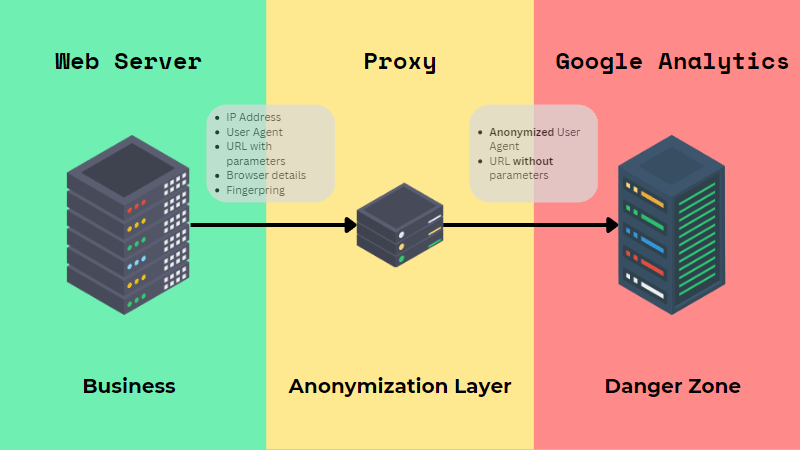Opening Insights: Understanding What Data Does Google Analytics Prohibit Collecting
Opening Insights: Understanding What Data Does Google Analytics Prohibit Collecting
Blog Article
Grasping the Art of Overcoming Data Collection Limitations in Google Analytics for Better Decision-Making
In the realm of electronic analytics, the ability to essence significant understandings from data is extremely important for informed decision-making. By utilizing tactical approaches and innovative methods, organizations can elevate their information quality, unlock hidden insights, and lead the way for more informed and effective decisions.
Data Quality Analysis
Examining the quality of data within Google Analytics is a critical action in guaranteeing the dependability and accuracy of understandings derived from the collected details. Data top quality analysis includes examining various aspects such as precision, completeness, consistency, and timeliness of the data. One key facet to take into consideration is information accuracy, which describes just how well the data shows real values of the metrics being gauged. Unreliable information can bring about malfunctioning conclusions and illinformed company choices.
Completeness of information is another essential factor in examining information high quality. Uniformity checks are also important in data quality evaluation to identify any kind of discrepancies or abnormalities within the information set. By focusing on data top quality analysis in Google Analytics, businesses can improve the dependability of their analytics records and make more enlightened choices based on accurate insights.
Advanced Monitoring Techniques
Making use of advanced tracking methods in Google Analytics can substantially boost the depth and granularity of information collected for even more thorough evaluation and insights. One such technique is event monitoring, which permits for the tracking of details communications on an internet site, like clicks on buttons, downloads of data, or video clip sights. By applying occasion tracking, businesses can obtain a much deeper understanding of user behavior and engagement with their on the internet material.
Furthermore, custom dimensions and metrics supply a means to tailor Google Analytics to details company requirements. Custom measurements permit the production of brand-new data factors, such as individual functions or consumer sectors, while custom metrics allow the tracking of distinct performance indicators, like profits per user or average order value.
Moreover, the application of Google Tag Manager can streamline the implementation of monitoring codes and tags across a site, making it easier to handle and release sophisticated tracking arrangements. By taking advantage of these advanced tracking methods, businesses can unlock valuable insights and maximize their on-line approaches for far better decision-making.
Customized Dimension Execution
To boost the depth of information gathered in Google Analytics past advanced monitoring methods like event monitoring, organizations can implement customized dimensions for more tailored understandings. Custom-made measurements allow companies to define and accumulate specific data factors that relate to their distinct objectives and goals (What Data Does Google Analytics Prohibit Collecting?). By assigning customized dimensions to various elements on a web site, such as user communications, demographics, or session details, businesses can gain a much more granular understanding of how individuals involve with their online residential properties

Acknowledgment Modeling Methods
Reliable attribution modeling is vital for recognizing the effect of numerous advertising networks on conversion paths. By utilizing the ideal attribution model, businesses can properly attribute conversions to the ideal touchpoints along the customer journey. One typical attribution design is the Last Interaction design, which offers credit score for a conversion to the last touchpoint a user connected with prior to converting. While this model pop over to this web-site is straightforward and very easy to execute, it often oversimplifies the consumer trip, overlooking the impact of various other touchpoints that added to the conversion.

Data Experiencing Avoidance
When dealing with large quantities of data in Google Analytics, getting over information sampling is crucial to guarantee exact insights are acquired for educated decision-making. Data sampling takes place when Google Analytics estimates patterns in data instead than evaluating the full dataset, potentially leading to skewed results. By taking these positive actions to minimize data tasting, organizations can remove a lot more accurate understandings from Google Analytics, leading to far better decision-making and improved general efficiency.
Conclusion
In final thought, understanding the art of conquering data collection restrictions in Google Analytics is critical for making informed choices. By carrying out a thorough data high quality assessment, executing sophisticated monitoring techniques, making use of customized dimensions, employing attribution modeling techniques, and preventing data sampling, organizations can guarantee that they have reputable and precise information to base their choices on. This will inevitably bring about more efficient approaches and better outcomes for the company.

Report this page